Shure MV5 Review for Podcasters
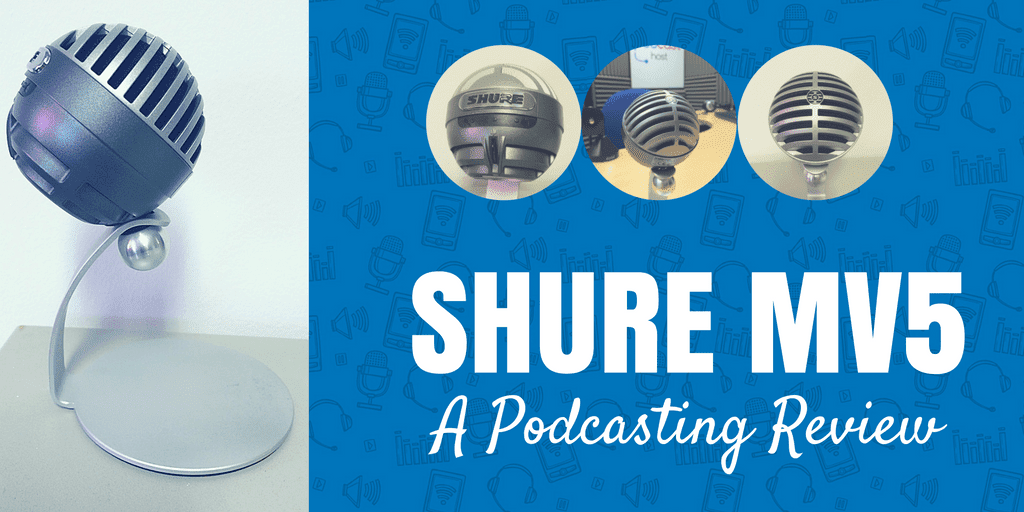
The Shure MV5 ($100/£100) is an excellent choice of mic for the podcaster who wants to keep things light and simple, whilst not compromising their sound quality.
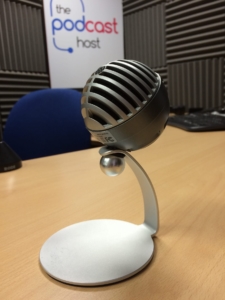
Microphone veterans, Shure, have been in the audio recording business for a long time. They know how to make great microphones.
The news that they were launching their MOTIV range of portable digital microphones last year was a huge boost to podcasting, in my opinion.
The simplicity of use on either your iPhone or Mac/laptop/PC means that the MV5 is an option for even the most inexperienced beginner. Let’s take a look at it.
Look & Feel of the Shure MV5
Shure have a reputation for making the hardiest of microphones. The SM58 and 58A to name two, would easily survive the nuclear apocalypse.
The MV5 has the same sturdy and durable feel that you come to expect from Shure. On top of that though, it’s very light, and would take up very little room in your kit bag.
The MV5 is ball-shaped, and about the size of a small apple. has its own little desk stand which screws in to the mic itself. The screw-hole is also the standard size for something like a digital camera tripod though, so you don’t necessarily need to use the default stand.
The Shure MV5 as a USB Mic
‘Plug & Play’ mics like the Blue Snowball or Blue Yeti are incredibly popular in podcasting. Most people aren’t sound engineers or audiophiles after all, and would rather concentrate on their content than mess around with equipment and gear.
You can have the MV5 unboxed, set up, and plugged into your computer in about a minute. Then, you just need to download Audacity (which is free), hit record, and away you go.
The Shure MV5 as a Mobile Mic
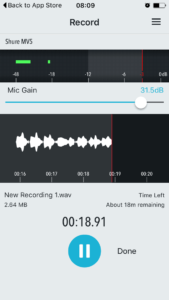
This is where the MOTIV range really excels above their USB-only rivals. You don’t even need a Mac, laptop, or PC to record with them.
Shure’s free Motiv app can be downloaded to your iPhone from the App Store, and turns your device into a little recording interface.
Once you’ve connected the mic to your iPhone (via the lightning connector provided with the MV5), opening up the app will power up the mic and you can start recording immediately.
The MOTIV App
Inside the app you can can control your mic sensitivity with the gain slider, and monitor you input recording levels.
There are two gain presets, one designed for speech, and one designed for instruments. Or you can set it manually depending on the source of your recording.
You can apply a limiter to prevent clipping. You can also choose to apply compression to give you a more consistent volume level throughout your recording, as well as boost or reduce certain frequencies in your recording with a little EQ interface.
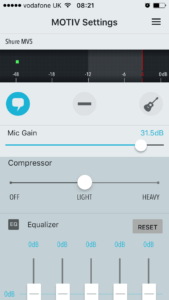
You can record your audio at 24/48 kHz, 24/44.1 kHz, 16/44.1 kHz, or 16/48 kHz. For podcasting and spoken word content there’s no reason to go any higher than 16/44.1 kHz.
If you don’t have a clue what any of this means, here’s a simple explanation. Short answer though, just select 16/44.1 kHz and forget about it!
You can only record/save your audio in WAV form in the MOTIV app, so it isn’t a one stop shop for creating a ready-made podcast episode.You can upload your file to Dropbox to apply the finishing touches in your computer’s editing software, or you can use it in conjunction with something like Bossjock Studio.
Features & Controls
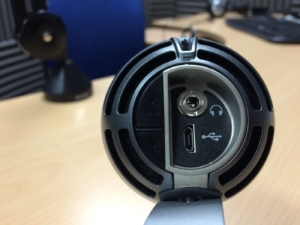
There’s a 3.5mm headphone port on the mic so you can monitor your recordings directly, as you do them. There’s a volume dial just above the port. This is purely to control your headphone volume and won’t alter anything in the recording itself.
There’s a ‘Mode’ button that lets you toggle through the 3 gain settings, the speech and instrument presets, and the manual gain which let’s you set your levels inside your computer, editing software, or the MOTIV app.
These 3 settings are displayed with their own display lights on the front of the mic. The middle one (manual gain) lights up as soon as the mic is powered up.
There’s a ‘Mute’ button that can be clicked on and off. When you have the mute button on, all three display lights will flash.
What Does The Shure MV5 Sound Like?
Here’s my two recordings. One was directly into my PC (with Audacity), and the other was into my iPhone 5 (with the MOTIV app).
I didn’t do any treatment/processing in post-production to either of the files. The mobile version did have ‘Light Compression’ applied in the MOTIV app during the recording though.
Mobile sample
Computer sample
Conclusion
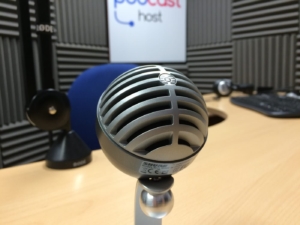
As you can probably tell, I’m really impressed by the Shure MV5, and I think it’s an excellent addition to podcasting’s digital mic arsenal.
At $100/£100 it’s about the same price as the popular Blue Yeti, with the added bonus of extra portability and mobile use. It depends on your exact needs of course. If you have a permanent setup at your desk and never do any ‘on the go’ recordings then the Yeti still gives you a few more recording options.
The MV5 is more expensive than the Blue Snowball, though it blows that out of the water on pretty much all fronts.
In summary, if you’re looking for a quality, low cost USB solution, I still recommend the ATR2100/Samson Q2U.
But if you want to boost your audio quality, record on the go, and rely more on your iPhone than your Mac/laptop/PC, then it’s hard to see past the Shure MV5.
